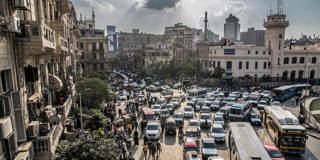The $100 billion per year that rich countries promised back in 2009 to provide to finance developing countries' green transitions is yet to materialize. But another issue has received less attention: how to ensure that the money will have the desired effects.
LONDON – Here is a tale of two countries. Small and developing Heliopolis and Urbana are in dire need of green infrastructure. Without it, both will miss the greenhouse-gas emission targets they have committed to in various climate summits. Mindful of the low-income status of these nations, the international community announces it will give each $1 billion a year for five years to make the needed investments possible.
Most of Heliopolis’ emissions come from the coal-fired plants that produce the country’s electricity. Luckily, Heliopolis is a sunny and pleasant land, and its mostly rural population is evenly distributed across the territory. The necessary power can be produced by roof-top solar panels and small-scale solar parks, with little transmission and distribution infrastructure needed. So, Heliopolis uses the $1 billion to import solar panels (they are not produced domestically), swiftly closes the carbon-belching coal plants, and announces that by 2030 all of its electricity will be green.
Urbana, by contrast, is densely populated. Most of its carbon emissions come from the cars and buses perennially stuck in traffic in the capital city. Urbana needs to increase use of public transport, get traffic moving, cut travel times, and reduce pollution.

LONDON – Here is a tale of two countries. Small and developing Heliopolis and Urbana are in dire need of green infrastructure. Without it, both will miss the greenhouse-gas emission targets they have committed to in various climate summits. Mindful of the low-income status of these nations, the international community announces it will give each $1 billion a year for five years to make the needed investments possible.
Most of Heliopolis’ emissions come from the coal-fired plants that produce the country’s electricity. Luckily, Heliopolis is a sunny and pleasant land, and its mostly rural population is evenly distributed across the territory. The necessary power can be produced by roof-top solar panels and small-scale solar parks, with little transmission and distribution infrastructure needed. So, Heliopolis uses the $1 billion to import solar panels (they are not produced domestically), swiftly closes the carbon-belching coal plants, and announces that by 2030 all of its electricity will be green.
Urbana, by contrast, is densely populated. Most of its carbon emissions come from the cars and buses perennially stuck in traffic in the capital city. Urbana needs to increase use of public transport, get traffic moving, cut travel times, and reduce pollution.